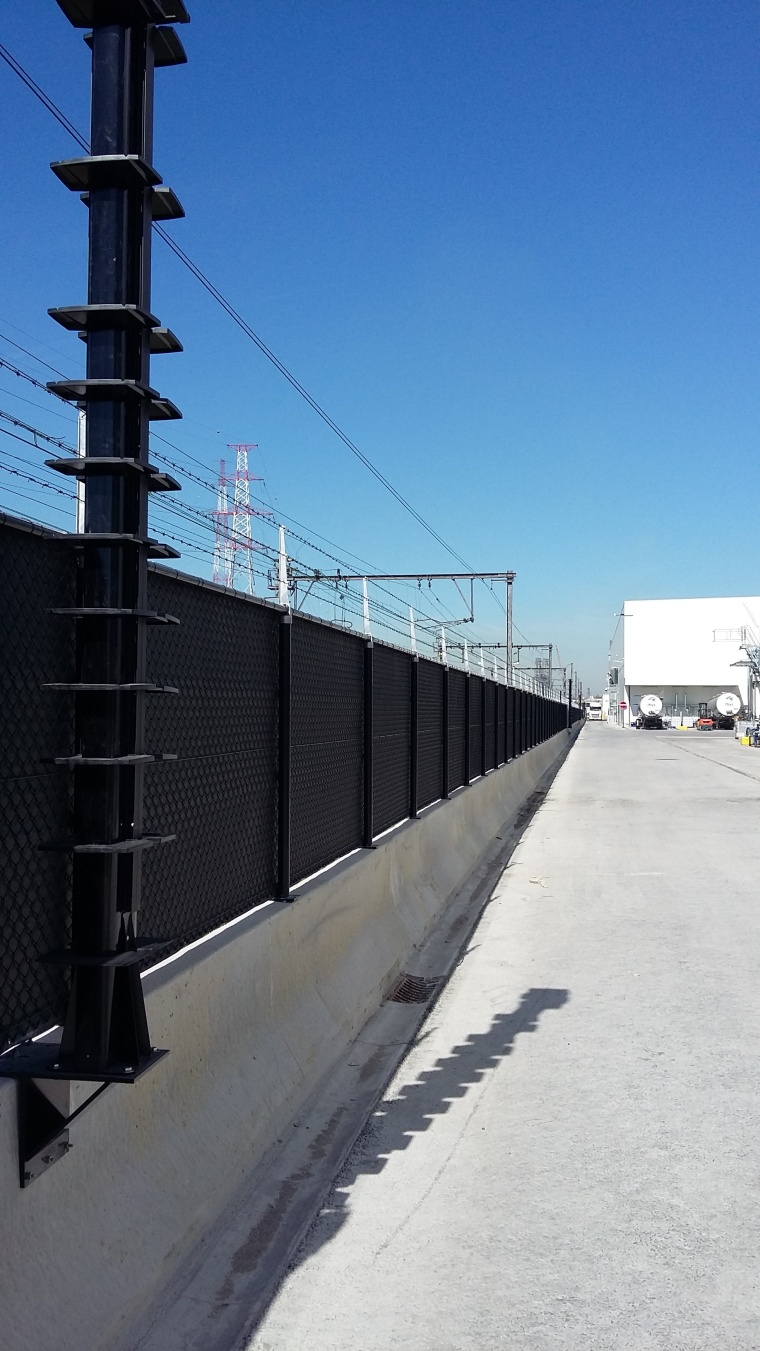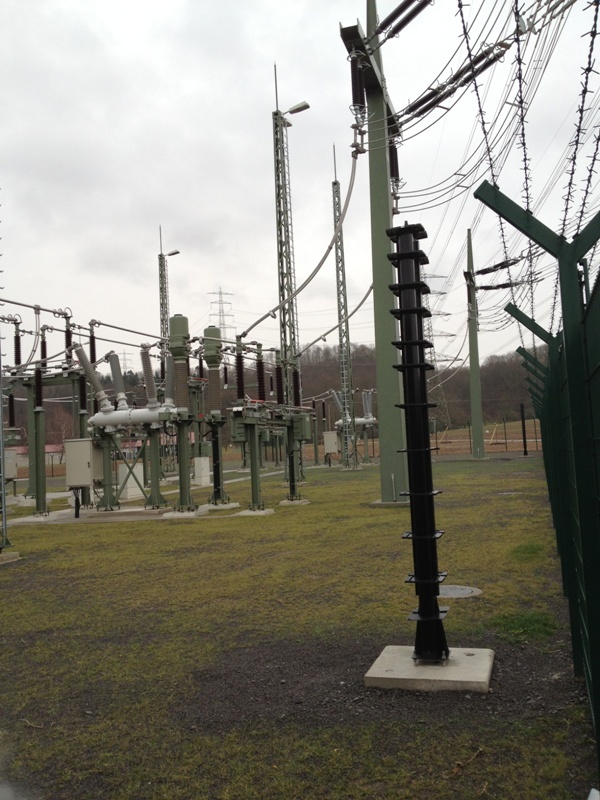Choosing the Most Appropriate Perimeter Security System
When it comes to protecting the perimeters of highly sensitive sites, not all technologies are the same. How do the people responsible for physical protection of people, property and assets choose the most effective technology given the application? A layered approach is one Sorhea recommends, so all areas of a perimeter are covered. Layering ensures that if one technology misses an intruder, another technology will capture it.


A layered approach ensures all areas of a perimeter are covered, including gaps such as gates and blind spots that may be missed by cameras alone. A combination of perimeter intrusion detection and tracking technologies will best serve security personnel in providing the most robust perimeter protection.
Sorhea offers a full range of perimeter intrusion detection technologies, some of which feature multiple detection technologies in the same product: Piramid combines passive infrared with microwave and Apiris is a triple technology IR Barrier.
Questions for your best Perimeter Security
In choosing the most appropriate technologies for perimeter protection, security managers and directors should consider the following:
What is the potential threat faced? e.g. Climber, cutting the fence, fast moving vehicle, etc.
What level of security does your site require? For example, a military base or government site has a different level of risk compared to a car dealership. The technical solution is based on the level of security required.
What physical deterrents, if any, exist today? An existing fence line to which a detection system can be attached or no fence at all – perhaps due to the need of maintaining the aesthetic integrity of the surrounding still requires high security. The site’s landscape, layout and environmental conditions are also important.
Existing infrastructure? To keep costs down, choosing technologies that integrate to existing systems is critical. Communications between those accountable for physical security and IT departments will ensure a complete integration among systems.
Deployment and maintenance? There are intrusion detection technologies that are cheaper to purchase, but are more expensive to install and maintain.
Sorhea offers a wireless and solar-powered option (Solaris) with advanced technology, which reduce installation and maintenance time, because no underground cabling is required. Together with the web-based maintenance, it reduces the overall cost and Total Cost of Ownership.
With multiple technologies protecting the perimeter, centralized monitoring is critical. With Sorhea’s Maxibus and the recently introduced Connect module, one interface can manage all incoming Sorhea surveillance technologies.
Open protocols are also becoming the norm, so choosing manufacturers whose technology can communicate with the other providers’ allows for easy management of surveillance systems, regardless of manufacturer.
Are you using or considering the latest technologies? Physical security and perimeter systems are aging, for the most parts, and not all manufacturers are keeping up with the latest technology.
Traditionally, perimeter security requires an extensive skill set to set up poles for lighting, mounting cameras and communication infrastructure, such as switches and routers. It is very costly in terms of installation time and workload to meet deployment timeframes.
Example Installation
For one of Sorhea’s clients, they had to obtain a very strict set of requirements. The level of security was supposed to be very high. They had a large perimeter of more than 6 kilometres to protect and with that came an experienced risk of sabotage caused by intruders starting a fire. They wanted a minimum of dual beam detection with mono detection of bottom beam and only had a limited budget for civil works.
The Solution
In this context, and in order to limit civil engineering works, Sorhea proposed a solution that did not require any power cables thanks to integrated solar panels. The active infrared barrier Solaris was included to form an invisible wall of detection around the site. 22,000 square metres were secured within an industrial site with a total installation of 34 Solaris columns.
Technology
The Solaris technology can cover miles of perimeter with little to no infrastructure – the value proposition is exceptional and the total cost of ownership has been greatly reduced. Solaris is being deployed around the world in various government installations. Its self-contained infrared barrier columns form an invisible fence to detect unwanted intrusions.
Powered by a solar panel and highly efficient integrated battery, installation requires little to no civil engineering. Communication occurs through a dynamic radio mesh network (through proprietary protocol) to and from all Solaris columns that transmit alarm information reliably and efficiently. This communication uses the highly secure Advanced Encryption Standards (AES 256). Each Solaris column integrates a powerful radio transmitter/receiver with low power consumption. When the infrared barrier sensor detects an intrusion, alarm information is collected by all nearby infrared columns that retransmit information automatically. The alarm message is relayed to a radio coordinator connected to the Maxibus Universal hub. The alarm center receives an intrusion alert notification. In case one Solaris column is down, an alert is triggered acting like a watchdog for individual column status reporting.
Solar-powered, wireless infrared technology for perimeter protection features include: A patented design with anti-condensation, anti-ice caps which prevent the formation of ice on the IR cover for exceptional performance in all weather conditions; easy Installation: Independent barrier, no civil engineering or cabling required, columns are bolted to concrete block – operational in minutes; reliability: Communication through secure radio protocol with a high probability of detection; innovation: one of the first autonomous, long-range 300 feet (100m) infrared barrier in the industry.
Solaris is an ideal solution for sites that require high-security perimeter surveillance with minimal infrastructure. It is ideal for utilities, sub-stations, control centers, nuclear plants, correctional facilities as a secondary layer of perimeter protection, logistics sites like storage and warehousing, car dealerships, industrial complexes, etc.
The goal of outdoor perimeter security is to provide advance warning, enhance overall situational awareness and improve response times of security staff. Effectively deployed, perimeter security systems extend the physical perimeters of sites so breaches are identified in advance of a damaging event.

Business Partner
Sorhea GmbH1 rue du Dauphiné
69517 VAULX-EN-VELIN
France
most read


GIT SECURITY AWARD 2026 - The winners have been announced!
GIT SECURITY AWARD 2026: The best safety and security solutions of the year - now an overview of all winners

What Does Ethical AI Governance Look Like in Practice?
The InCyber Briefing will explore AI, post-quantum readiness, data sovereignty, and crisis simulation

Integrated and Futureproof: Traka’s Next Chapter
Interview with Stefni Oliver on Traka’s Vision for the Future

Is Your Venue Ready for Martyn’s Law?
Martyn’s Law demands stronger security by 2027. Is your venue prepared to protect and respond?







